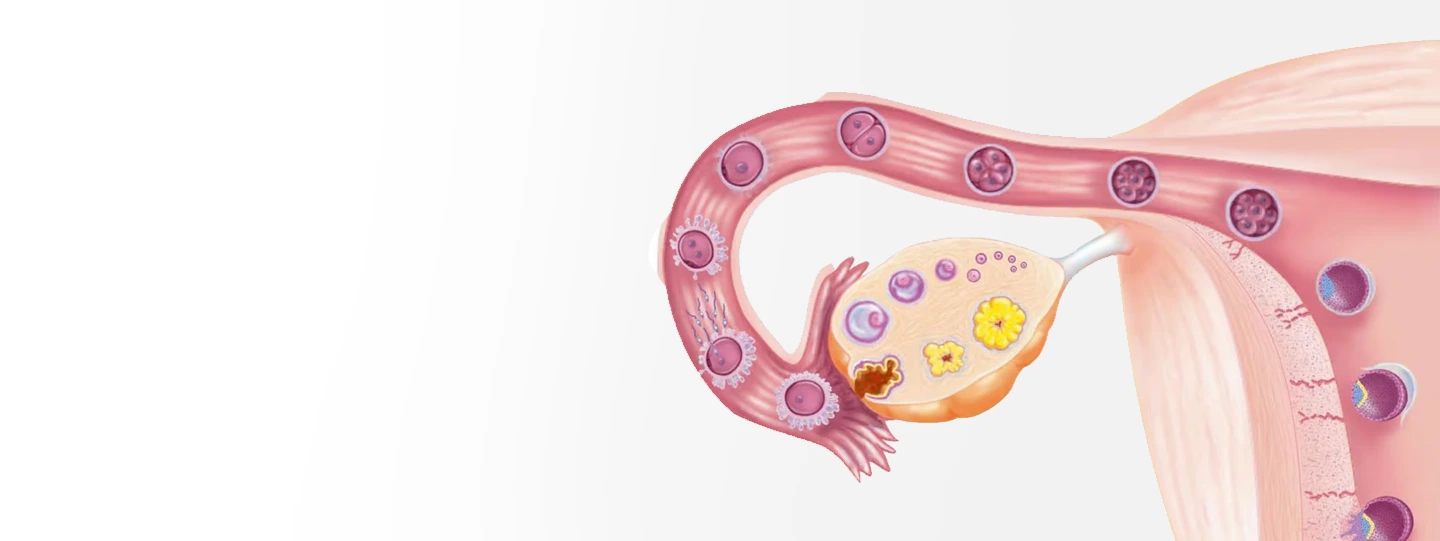

The "fertile window" and the "ovulation period" may seem related; however, they are not the same. Here is the basic difference:
The fertile window is the broader timeframe when the chances of conceiving increase. This consists of the days preceding ovulation (up to 5 days before), and it includes the day of ovulation itself.
It is the exact time when an egg is released from the ovary. Ovulation generally lasts about 16 to 32 hours. Knowing the time of ovulation can increase the chances of conception.
Read Also: Stages of Menstrual Cycle: Menstruation, Ovulation, Hormones
Here is how ovulation increases your chances of pregnancy. Know what happens during ovulation.
Read Also: How To Choose The Best IVF Clinic For Your Journey: Key Factors To Consider
Observe the following signs and symptoms so that you can match your timing with the ovulation period.
As the ovulation period comes near, mucus becomes clear, stretchy, and slippery (like egg whites). This is because of an increase in estrogen level, helping the sperm move easily to the egg in the fallopian tube.
Your resting temperature can be slightly higher (by 0.5–1°F) after ovulation because of increased progesterone levels. You can measure the temperature by BBT thermometer; if it increased, this signals that an egg was recently released from the ovary.
Some feel a dull or sharp twinge on one side of the lower abdomen when the egg is released from the ovary, caused by the rupture of the ovarian follicle.
However, if the pain is severe and lasts for a longer time, consult your doctor, as it may indicate another health condition.
You may notice a natural increase in your intimate desire. This is because of hormonal increases (testosterone and estrogen) right before and during ovulation.
You may experience breast or nipple tenderness or soreness. This is due to rising hormones, like progesterone and estrogen.
The cervix (a small canal that connects your uterus and vagina) becomes softer, moves higher, and opens slightly due to high estrogen. This allows sperm to enter more easily to achieve fertilization.
The abdomen feels puffy and full because of hormonal fluctuations. These are the signs that your body is getting ready for possible fertilization and implantation.
You may notice very light spotting or pinkish discharge. This is caused by the follicle bursting to release the egg.
Hormonal changes can temporarily sharpen senses. This is possibly helping to subconsciously engage in intercourse at the peak of fertility.
The increase in estrogen can bring about a “glowing” complexion. However, it can sometimes cause small breakouts as another physical sign of ovulation.
Note: Not every woman is different; not all of them will experience the same symptoms. If you are trying to conceive and want to know the best methods, consult your doctor.
This method predicts ovulation by analyzing the past 6 months of menstrual cycles to determine when they’re fertile.
Detects the increase in luteinizing hormone (LH) in urine, which generally occurs 24-36 hours before ovulation.
You should know your ovulation periods for the following benefits:
No two women are the same; that’s why you may not experience all of these symptoms. But if you’re not experiencing any signs at all, then it may indicate:
You need to consult your gynecologist for a detailed diagnosis to guide the right treatment.
It's crucial to keep in mind not to push your body too hard to increase pregnancy chances. As this can cause stress, triggering hormonal imbalances that can disrupt ovulation and lower fertility.
Approaching conception with the right tips and calmness is the key
If you are still facing issues conceiving, then consult your doctor at Surya Hospitals.
Q1: When is the egg released from the ovary?
A: The egg is released from the ovary during ovulation, generally around day 14 of a 28-day menstrual cycle. This release is triggered by an increase in luteinizing hormone.
Q2: What are the signs of bad egg quality?
A: Signs of bad egg quality could be:
Q3: What is the ovulation period?
A: The ovulation period is the time when an egg is released from the ovary. The egg is now available for fertilization, usually lasting 12 to 24 hours.
